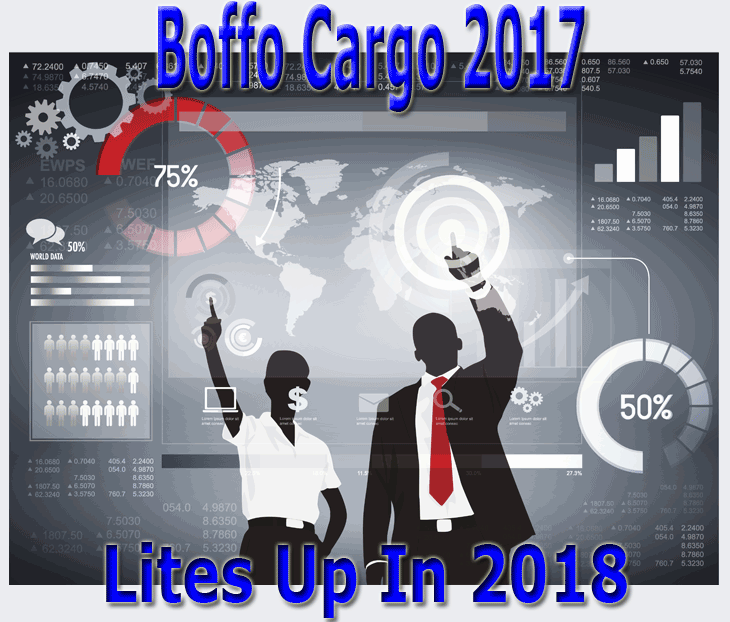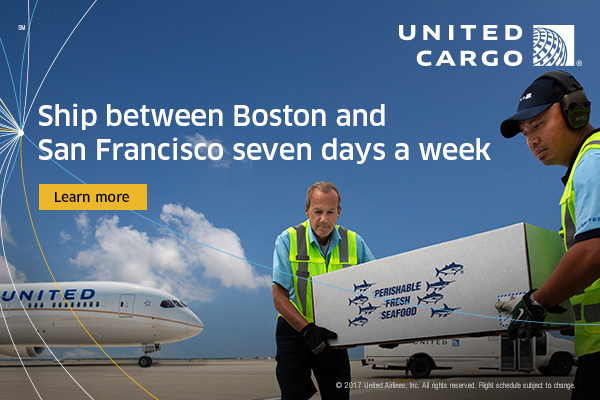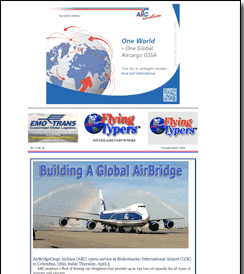
Presently, the outlook for global air cargo
markets is decidedly mixed after a fantastic 2017. The latest figures
from Airports Council International revealed that total cargo including
mail handled at all airports worldwide expanded by 7.9 percent last year,
and international freight grew by 9.9 percent over the same period.
But although volume growth has continued
at healthy levels in the early months of 2018, reports from forwarders
suggest that while the market has hardly turned bearish, neither is it
firing on all cylinders.
Even so, finding space is not always easy.
“It depends on the freight lane and
cargo—it’s horses for courses,” said one.
 Space
Not An Issue HKIA Space
Not An Issue HKIA
Paul Tsui, managing director of Hong Kong-based
forwarding and logistics operator Janel Group, said there was currently
no capacity issues out of HKIA, the world’s largest freight hub
in 2017.
“Demand is quite slow and we expect
the situation will not improve until late June or even early July,”
he told FlyingTypers.
Another forwarder active in Hong Kong and
China said there had been “some issues” with customs for e-commerce
shipments by air in China, which had slowed volume growth, but he could
not provide further information.
Rating Markets
According to Freightos, Europe-U.S. Air
Freight general rates have been increasing all year, starting at $1.15/kg
at the beginning of 2018, rising to $1.43/kg by February, to $1.65/kg
by March, and up to $1.80/kg earlier this month. Meanwhile, the digital
freight marketplace said over the same period “China-U.S. and China-Europe
rates went up in the lead up to Chinese New Year, and have eased since.”
According
To IATA
Certainly, the figures available from earlier
in the year suggest global economic growth remains healthy, albeit with
most analysts noting that it could face headwinds if a trade war between
China and the U.S. breaks out. IATA said volumes over January and February
had been healthy with demand growth in February 2018 showing a 6.8 percent
year-on-year increase.
“Adjusting for the potential Lunar
New Year distortions by combining growth in January 2018 and February
2018, demand increased by 7.7 percent,” said IATA. “This was
the strongest start to a year since 2015.”
 Spoel
Tightening Spoel
Tightening
Rogier Spoel, air transport policy manager
at the European Shippers’ Council, told FlyingTypers that
the air freight market in general had seen a tightening of space over
the last year. And although shippers were finding it harder to secure
suitable capacity, supply chain disruptions had been rare.
“The expectation is that if the growth
of 2017 continues in 2018, this surely will become a problem,” he
said. “Shippers overall are more worried about congestion issues
at the major airports rather than a lack of cargo space. Shippers do complain
of higher supply chain costs, however that is the economic reality.
“For shippers of consumer goods, there
are options to use other modalities such as ocean or perhaps rail. For
time and value sensitive shipments, air transport is often the only option
and in the worst cases this may lead to such an increase in costs or orders
being cancelled. But that is something that we will find out in the course
of this year.”
That Certain Tightness
So what happens next? According to analysis
from Stifel, after the air freight market came roaring back last year
driven by broad-based cyclical recovery and structural changes in the
international flow of goods, primarily due to cross-border e-commerce,
supply-demand fundamentals will see the market remain tight in 2018. “While
capacity dynamics vary by lane, global demand growth broadly exceeds supply
growth—especially main deck freighter supply,” said a note.
“This situation is likely to persist into the near future, driving
higher load factors, rising prices, network changes, and greater efficiency
in the industry.”
The Cautionairies
IATA was more or less bullish. In its latest
report the Association said that although continued growth in air cargo
demand was consistent with ongoing robust global trade flows, there were
signs that peak air freight had now passed. “Demand drivers for
air cargo are moving away from the highly supportive levels seen last
year,” it said.
“In recent months the Purchasing Managers
Index (PMI) for manufacturing and export orders has softened in a number
of key exporting nations including Germany, China, and the U.S.
“And the seasonally adjusted demand
for air cargo which rose at a double-digit annualized rate for much of
2017 is now trending at 3 percent.”
Alexandre de Juniac, IATA’s Director
General and CEO, also noted that negative headwinds could hurt the industry
if protectionist policies gain traction in key markets.
“Demand for air cargo continues to
be strong with 6.8 percent growth in February,” he said.
“The positive outlook for the rest
of 2018, however, faces some potentially strong headwinds, including escalation
of protectionist measures into a full-blown trade war.
“Prosperity grows when borders are
open to people and to trade, and we are all held back when they are not.”
SkyKing
|






 Vol.
17 No. 19
Vol.
17 No. 19